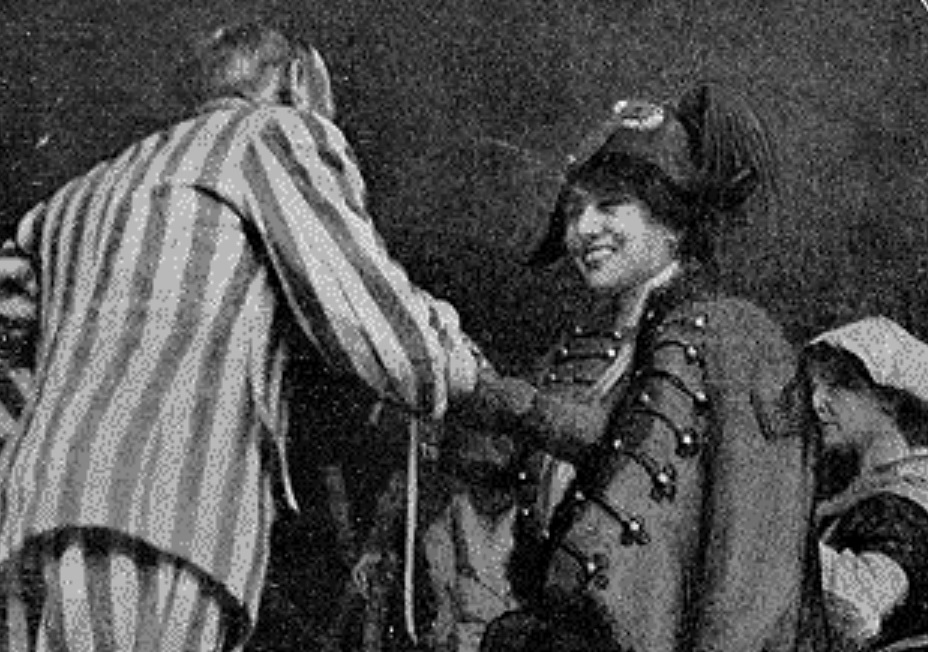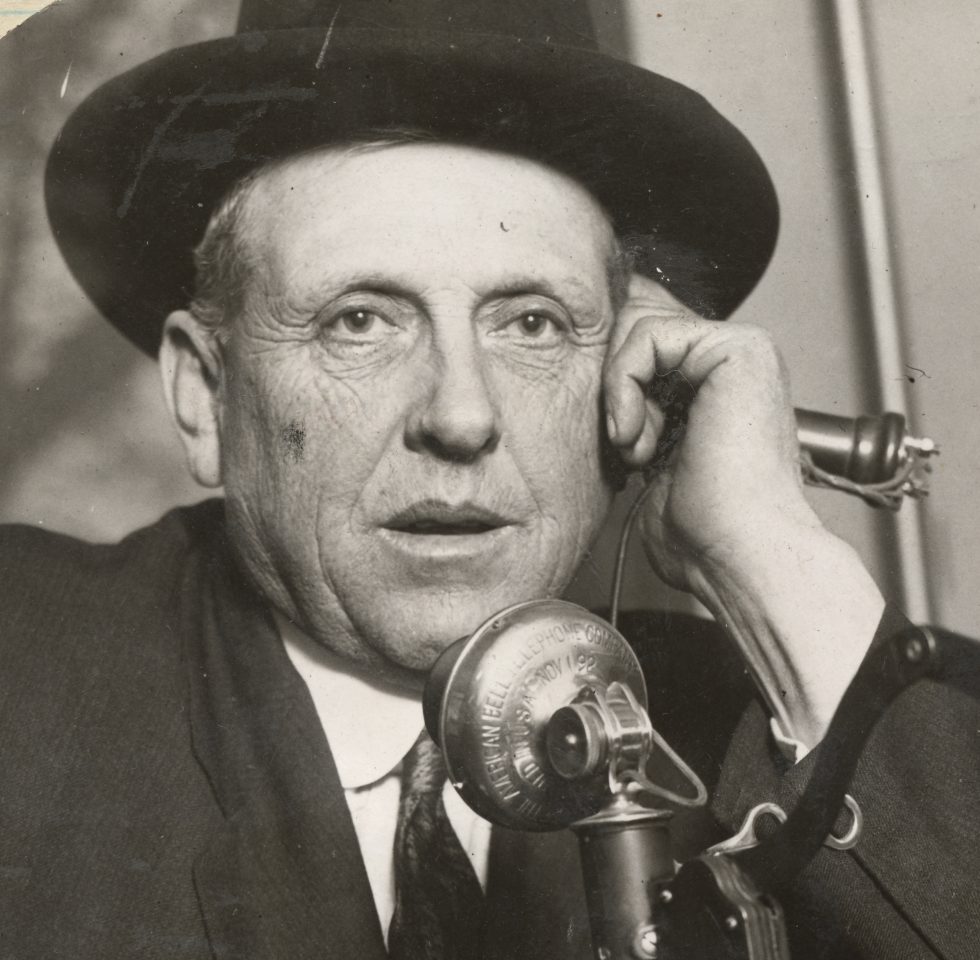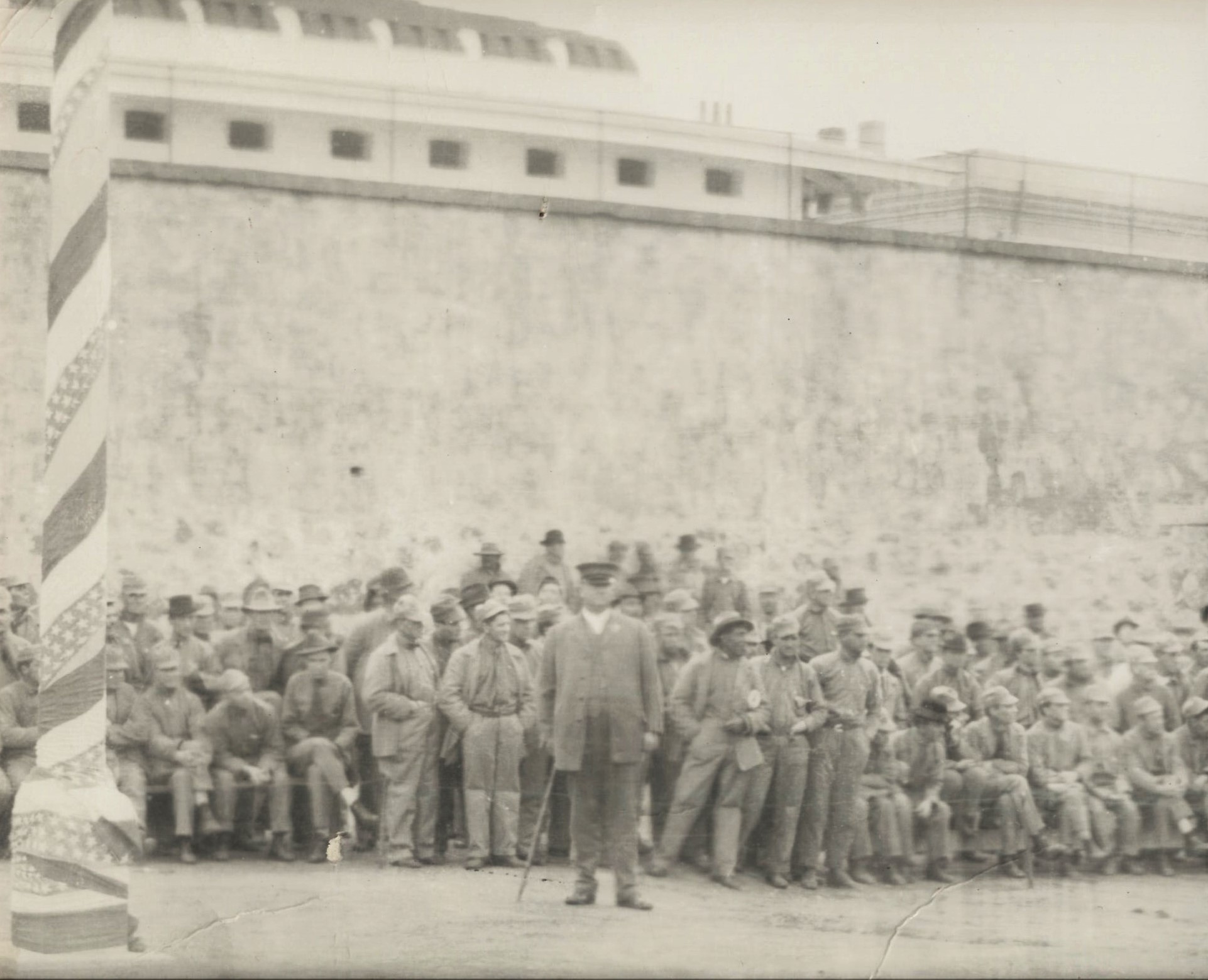Prior to San Quentin Warden Hoyle arriving in 1907, volunteers were rare. Thanks to his reforms, and the volunteers who helped see them through, rehabilitation received a significant boost.
Serving until 1913, he identified best practices and oversaw a major shift in the way staff interacted with the incarcerated population.
Incarcerated population thanks new warden
For those in state custody, the positive changes were noticeable.
After his first year, San Quentin’s incarcerated residents presented the warden with a letter of gratitude.
“Warden Hoyle was presented with a carefully written set of resolutions from the prisoners under his care, thanking him for his kind treatment and the interest he has taken in them,” reported the Sacramento Union, April 17, 1908. “So far as is known, this is the first time that anything of the kind has been done by prisoners in the state prisons of California. (The document) is signed by five prisoners who were appointed to a committee by their fellows. The resolution is said to be the outcome of new methods employed by Hoyle when he entered the prison.”
From newspaper publisher to warden
Hoyle didn’t have a prison background, but also wasn’t a complete novice. For a year before being named warden, he clerked at San Quentin. He was also a newspaper publisher.
Through Hoyle’s efforts, volunteers brought the arts inside to the incarcerated population. Broadway hit “Alias Jimmy Valentine” saw performers put on the play at San Quentin in 1911. He built on that success by inviting Sarah Bernhardt and her players in 1913.


Many practices still in use today can be traced to Hoyle.
Among those are:
- Classification of prisoners
- Trade schools
- Improved sanitation
- More substantial food
- Better clothing, doing away with prison stripes.
Success draws attention of other states
With San Quentin seeing success, other states tried recruiting Hoyle. Rather than lose the popular warden, California increased his pay and gave him more control over reforms.
William Day, chaplain at San Quentin, praised Hoyle’s reforms.
“(Hoyle’s) reforms make the lives of the prisoners less difficult,” reported the San Francisco Call, July 29, 1912.
After public disagreements with the board of prison directors, Hoyle resigned.
“When Hoyle and (his wife) were about to depart from San Quentin to make their residence in San Francisco, the prison band serenaded them while guards and prisoners alike (removed their hats to show respect),” reported the San Francisco Call, Nov. 12, 1913.
Warden dumps the stripes

One of the warden’s last acts banned striped prison uniforms.
“Impending resignations and other (problems) did not mar the joy at San Quentin, where 1,000 convicts laid away their striped clothing and donned the natty blue-gray uniforms devised for them by Hoyle,” reported the Mariposa Gazette, Nov. 15, 1913.
“The passing of the stripes was a momentous occasion at the prison. Under (Hoyle’s) new rules, the only striped clothing in the prison will be worn by (those) who make a practice of violating the prison rules.”
After retiring, Hoyle became a business man, operating hotels in the San Francisco area.
Nearly 20 years later, Hoyle’s death was front page news. He was 58 when he passed away from kidney disease in 1932.
Hoyle’s legacy of prison reforms was highlighted in newspaper accounts of his life.
“(Hoyle is credited with) initiating the movement toward humanizing prisoners,” reported the Redding Searchlight, December 13, 1932.
Many of Hoyle’s reforms were later adopted across the country.
Enlisting the help of community volunteers, while also offering activities and entertainment, secured his place in prison reform history.


Learn more about California prison history.
Follow us on YouTube, Facebook and Twitter.
"lasting" - Google News
April 20, 2022 at 10:17PM
https://ift.tt/l0h4cIw
Warden Hoyle volunteers ensured lasting changes - - CDCR
"lasting" - Google News
https://ift.tt/dYciZwm
Shoes Man Tutorial
Pos News Update
Meme Update
Korean Entertainment News
Japan News Update
Bagikan Berita Ini














0 Response to "Warden Hoyle volunteers ensured lasting changes - - CDCR"
Post a Comment